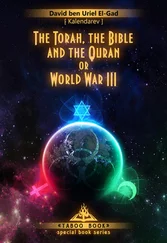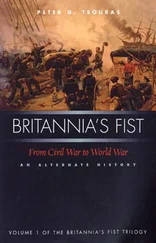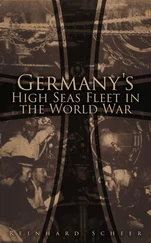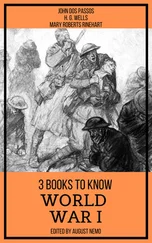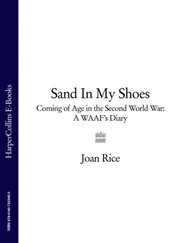13. NAA A5954 805/1 folio 608.
14. NAA A5954 812/2 folio 117.
15. NAA A5954 812/2 folio 124 AWC Minute 180, ‘Transmission gear for tanks’. Many of the War Cabinet and Advisory War Council minutes have this title. It is a phrase that can mean any or all of the elements in the power train, which can include the engine, transfer shaft, gearbox and final drive.
16. NAA A5954 812/2 folio 129 AWC Minute 204.
17. NAA A5954 587/2 ‘Notes on History of tank production in Australia’ covers the period 28 June 1940 to 21 October 1943. Authorship is not disclosed.
18. NAA A5954 489/1; this control symbol contains Reports 1 to 10 from the Director-General of Munitions. All subsequent reports have their own individual control symbols.
19. The transcript of the discussions at this meeting is contained in NAA A2671 War Cabinet Agendum 150/1940. It is to be found between Supplements 3 and 4, and has no identifying number. This is a very important document. Not only does it provide a vivid picture of the status of the tank project, but also demonstrates the attitudes of the three main groups of stakeholders. Group 1, the users, consisting of the politicians and the Army, don’t know much, but they want as much as they can get. Group 2, the designers, are sure that their designs are so good that there is no need for pilot models, and manufacture can start from the design drawings. Group 3, the manufacturers, have their feet firmly on the ground, and see many problems in bringing the project to a successful conclusion. And at this stage there is no one person in charge of the project.
20. Lieutenant Colonel A. Milner was Superintendent of Design at Army HQ. The reason for sending him to America is related in Mellor, The Role of Science and Industry , p. 307.
21. In The Great Tank Scandal (p. 58), David Fletcher makes this point in respect of the British A22, or Churchill. There was an urgent need for tanks in mid-1940 and, as Fletcher explains: ‘In an attempt to satisfy this need for haste it was decided to go straight into production from the drawing board. One of the engineers in the team said that the first production run of 500 would provide 500 pilot models.’ This was completely accurate, and it took more than two years before all the serious bugs had been ironed out of the Churchill. The only time Churchills saw action during the first three years of their existence was when the Canadians attempted to land at Dieppe in August 1942, and that was a disaster.
22. Minute 531 can be found as a supporting paper in Supplement 4 to War Cabinet Agendum 150/1940, NAA A2671.
23. NAA A5954 806/1 folio 795.
24. This letter is a supporting paper in Supplement 4 to War Cabinet Agendum 150/1940, NAA A2671.
25. NAA A5954 806/1 War Cabinet Minute 1116.
26. NAA A5954 322/2.
27. NAA A5954 806/1 folio 854.
28. NAA A5954 806/1 folio 857: War Cabinet Minute 1173, Weekly Progress Reports by Chiefs of Staff.
29. NAA A5954 806/1 folios 871–2: War Cabinet Minute 1191, ‘Provision of tank equipment and personnel’.
30. Mellor, The Role of Science and Industry , p. 307, note 3.
31. Ibid., p. 306, note 9. Code was an engineer who had worked with vacuum oil, and was Director of AFV Production from 1941 to 1944.
32. NAA A5954 489/2.
33. NAA A5954 806/2 folio 897, WC Minute 1245 ‘Tanks for the armoured division’.
34. NAA A5954 587/2 para 10.
35. Ibid., para 11.
36. NAA A5954 357/1.
37. NAA A5954 813/1 folios 316 to 321, Minute 533 ‘Discussion with C-in-C Far East’. Sir Robert gave a long talk covering three main topics: foreign situation; strategic position; military plans and preparedness.
38. Mellor, The Role of Science and Industry , pp. 309–312.
39. Hopkins, Australian Armour, p. 60.
40. Reports 14 and 15 were the Director-General of Munitions’ reports for August and September 1941. They were presented to the War Cabinet on 6 November, and were recorded in Minute 1476, NAA A5954 807/1 folio 1030.
41. NAA A5954 587/2 ‘Notes on history of tank production in Australia’ paras 12 and 13.
42. NAA A5954 555/10.
43. NAA A5954 807/1 folio 1064, War Cabinet Minute 1527.
44. NAA A2671 War Cabinet Agendum 150/1940.
45. The War Cabinet’s decision is recorded in Minute 375, NAA A5954 804/1 folio 276.
46. Chapter 3 contains details of this proposal.
47. Hopkins, Australian Armour , pp. 331–339; see also NAA MP 729/6 37/401/228. Hopkins calls his document ‘The Cowra paper’ because he wrote it while stationed at Cowra. The second document is more complete and contains organisation charts and establishments.
48. Ibid., p. 37.
49. NAA A5954 805/1 folio 816.
50. Hopkins, Australian Armour , pp. 41–42.
51. AWM224 MSS 44 Part 14.
52. Ibid.
53. AWM54 943 2/14 Armoured Division Training Depot; Military Board secret memo S 586 1941.
54. NAA A5954 322/3 Board of Business Administration Minute 531, Formation of an armoured division. Recommendations arise from discussion of BBA Agendum 38/1941 Supplement 2.
55. NAA A5954 806/1 folio 795, War Cabinet Minute 1088.
56. Handel, Dust, Sand and Jungle , pp. 136–7 provides an interesting biography of Pip Crouch. He joined the British Machine Gun Corps as a gunner in World War I at the age of seventeen, transferred to the tanks, and was wounded when his tank was hit in April 1917. On discharge from hospital he was commissioned into the Tank Corps. He won his MC in India in 1937, and was a very talented sportsman.
57. NAA A5954 806/1 folio 854.
58. NAA A2671 141/1940.
59. NAA A5954 806/1 folio 853.
60. NAA A2671 War Cabinet agendum 150/1940 Supplement 5.
61. NAA A5954 806/1 870.
62. Hopkins, Australian Armour, p. 46.
63. Handel, Dust, Sand and Jungle , p. 42.
64. NAA A2671 150/1940.
65. Recorded in Minute 1349, NAA A5954 806/2 folio 955.
66. The submission was made as Supplement 6 to War Cabinet Agendum 150/1940, NAA A2671.
67. Hopkins, Australian Armour , pp. 52–3.
68. Ibid., p. 50. Hopkins thought that armoured commanders needed to be quick of thought and decision, and that although Northcott was an excellent soldier, his thought processes were too slow.
69. The exact date appears to have been 1 September 1941. See Horner, Crisis of Command , p. 30.
70. Hopkins, Australian Armour , p. 51 and pp. 314–5.
71. Handel, Dust, Sand and Jungle, p. 33.
72. NAA A5954 805/1 folio 585, War Cabinet Minute 802.
73. NAA A5954 805/1 folio 592, War Cabinet Minute 809.
74. NAA A5954 812/2 Advisory War Council Minute 150. The members of the Committee were: E.S. Spooner and J.P. Abbott, members of the Government, but critical of its performance; the three members of the Opposition were: E.J. Holloway, A.S. Drakeford, and J.S. Rosevear.
75. Hasluck, The Government and the people, 1939-1941 , p. 391–2.
76. NAA A5954 812/2 folio 167, Advisory War Council Minute 312.
77. Ibid., folios 169E and 169F.
78. Hasluck, The Government and the People , 1939-1941, p. 393.
79. Ibid., p. 394.
80. Ibid., p. 368.
81. Ibid., p. 395.
82. Butlin, The War Economy 1939-1942 , p. 479.
83. Australian Manpower Directorate, The Control of manpower in Australia , Canberra, 1945, . p 17. Authorship of this document is not acknowledged, but it seems quite probable that if Wurth was not the author himself, he played a large part in its production.
84. Hopkins, Australian Armour, p. 33.
85. Long, To Benghazi , pp. 71–72.
86. Forty, Tank Commanders , pp. 72–74. Richard O’Connor was one of Britain’s few good commanders of armoured troops. In this action his command was called Western Desert Force, which subsequently became XIII Corps. While on reconnaissance he was captured in 1941, but later escaped, and commanded VIII Corps in Normandy. He had some disagreement with Montgomery, who sacked him in late 1944.
Читать дальше

